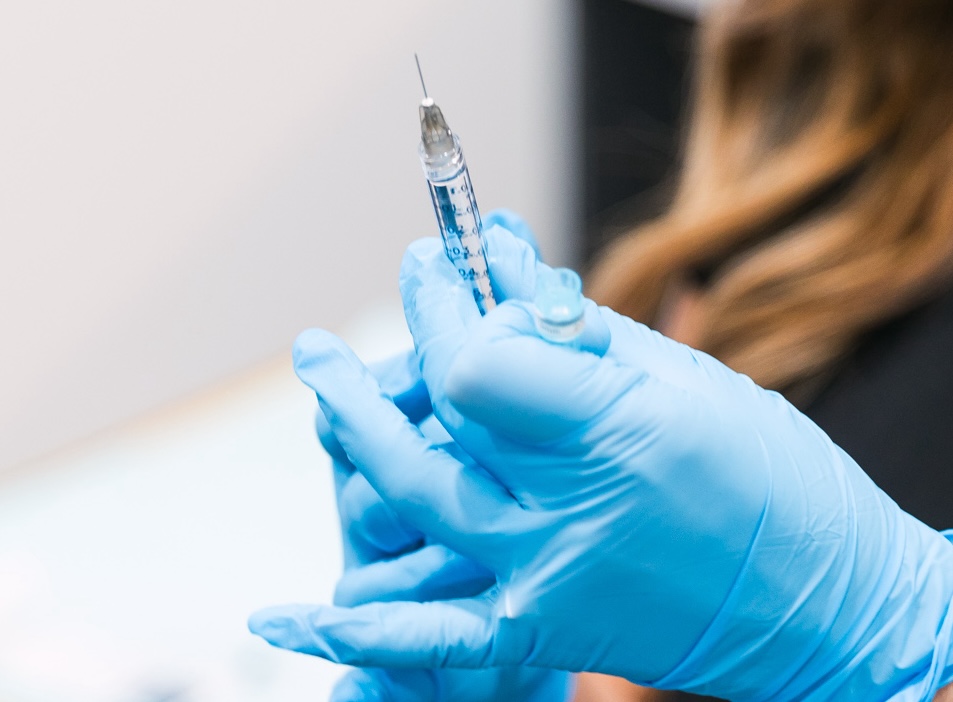
Considering a facial exfoliation treatment to rejuvenate your skin? Maybe you’ve even started doing a little research. If so, you’ve probably come across the term “dermaplaning” a few times. Are you wondering what dermaplaning is and want to learn more about it? Before deciding if it is the right procedure for you, it’s a good idea to get all the facts and consult with your medical professional.
What is Dermaplaning?
Dermaplaning, also known as dermablading, is the process of gently scraping away dead skin cells with a small surgical scalpel. It is a safe and highly effective physical exfoliation procedure which removes the uppermost layer of dead skin, dirt, oil, and bacteria as well as fine facial hair or “peach fuzz.” Using a surgical steel scalpel, trained medical aesthetic professionals gently stretch the skin so it is taut. Then holding the blade at a certain angle, make short strokes in specific patterns. These patterns vary depending on which facial area is being treated.
Is Dermaplaning Safe?
Performed by a trained and experienced medical aesthetics professional, it is safe and poses no more danger than shaving. It is a great option for women who are pregnant or nursing. They can treat themselves to a facial rejuvenation without any chemicals. It can even help control the superficial hyperpigmentation that can result from the hormonal fluctuations that occur during and after pregnancy.
Dermaplaning vs Shaving
Many people think shaving will achieve the same or similar results. This simply isn’t true. Dermaplaning resurfaces skin on a much deeper level and produces results that go well beyond what shaving can do. Although most razors have multiple blades, they are much duller than the blade of a surgical scalpel.
Who is a Good Candidate?
Dermaplaning is appropriate for almost any skin type, even candidates with extremely sensitive skin or rosacea. Candidates with acne-prone skin should not be treated. The fine facial hair, technically known as vellus hair is necessary for the oil from the sebaceous glands to be excreted. Without the hair, the oil will build up in the glands, blocking them and causing more breakouts. Those candidates who have very dark, thick facial should not be treated as well as anyone taking Accutane or blood thinners, or who have active shingles, hemophilia, or has an allergy to nickel.
How Often Can Dermaplaning be Done?
Dermaplaning removes about two to three weeks worth of dead skin cells. The treatment can be done every 4 weeks. This allows the skin to complete its normal rejuvenation cycle before the treatment is done again.
Is There Downtime?
The treatment only takes about 30 minutes and is painless with virtually no downtime. You can immediately return to your normal makeup routine and you won’t have any of that “peach fuzz” interfering with it. Although you should always wear sunscreen, using it diligently after dermaplaning is very important for protecting the new skin the treatment reveals.
Will the Hair Grow Back Thicker?
No. There are two types of hair, vellus and terminal. Vellus hair will remain the same no matter how many times you cut it. Terminal hair is thicker to begin with and it always grows back coarser. Because the “peach fuzz” is vellus hair, it will not grow back thicker.
Can Dermaplaning be Combined with Other Treatments?
Chemical peels and enzyme treatments are often performed in conjunction with dermaplaning. It allows these other treatments to penetrate deeper and more evenly, producing better results.
What Else Would You Like to Know?
Vive Weight Loss and Medical Aesthetics is proud to offer dermaplaning along with the wide variety of other medical aesthetic services. At Vive, our goal is to help you look your very best and ensure your experience with us is as relaxing and comfortable as possible. Want to really pamper yourself? Combine dermaplaning with a peel or facial. If you have more questions about dermaplaning or any of our other services, schedule a consultation.


